I had been recently working on Powerline communication modems (PLC). I put two PLC modems at different parts of my home and observed the data transfer rate between them. However, I observed that when I turned on an appliance in a home, I could see that there is a significant drop in the observed data rate. This should be attributed to the interference caused by turning on the appliance.
The following figure, which I also used in a poster that I recently published containing the same, shows the impact of different appliances on the data rate between the two end node.

The experiment involved turning on an appliance for 60 seconds and then turning it off for 60 seconds.
I was now trying to understand why such a behaviour was happening. So, went to the PLC modem manual and studied a bit. The PLC modem uses HomePlugAV standard and thus communicates in 2-28 MHz. I was able to observe the same on my spectrum analyzer, as shown below. Y axis is in dBm and X axis in Hz. The spectrum when PLC operates is clearly visible in the range of 2-28 MHz.

However, next when I put an appliance in parallel (emulating the setup when PLC communication rate would drop in home, when an appliance was turned on), I could see no change in the spectrum. What I was expecting to see was a distinct spectrum on the spectrum analyzer- maybe some frequencies get chopped of. My reasoning was that there could be 2 things affecting PLC rate:
- Attenuation caused by appliance switching
- Interference caused at particular frequencies by appliance switching
However, I am not able to quantify either of the two from my spectrum analysis. So, my question is: How can I find out what causes the rate to drop. Previous studies on narrow band PLC attribute this to interference caused by operating appliances as shown in the figure below.

I am unable to see such a change on my spectrum analyzer however. So, my questions would be:
- Is this principally a correct way to measure the desired phenomena- drop in rate vs interference?
- Am I doing something wrong that my spectrum analysis does not show such effects?
- Is there a simpler way to measure this phenomena?
- Is the frequency domain analysis sufficient?
To sense the powerline, I am using a 60 kHz HPF with 50 ohm matching impedance. Other thoughts on the experiment also welcome.
Possibly related: How can power line devices be affected by a power supply?